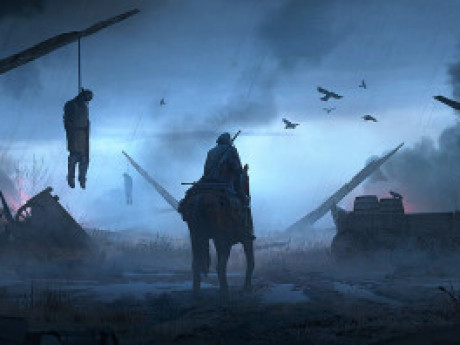Characters in this post

View character profile for: Margrave Otho
Matters of Faith
Ostiarium
Margrave Otho stood in the steps of the shrine of Kupen looking out at the gathering crowd.
The assassination of Friar Jassin Balvaris afforded him the perfect opportunity to step in and fill the void left by the weak priest.
Despite the protests by the Duke and some of his nobles, The Purger stepped in and declared a week of morning and penitence among the population. Margrave claimed the sins of the people had allowed an heathen to murder a servant of the Pillars in their house of worship.
The Silent Flock and those zealots that had arrived in the last ships took to the streets to look for sinners and apostates to be dragged and punished for their actions. Margrave Otho's was enjoying the rewards of his actions during the Odsier War, where many credited the man for the the decisive victory against the Plains natives and their magik users.
Large swats of the army and the population believed he had been sent by the Pillars into Arcadia and wash the land of the heathen.
Immediately after the death of the Friar, The Purger declared an 'Acts-of-Fate', a ritual of public penance and a major Inquisition process. It would not only involved a Mass, prayer, as well as the public procession of those found guilty of crimes against the Pillars, and a reading of their sentences.
The Acts-of-Faith usually began with the public proclamation of a grace period of seven days. Anyone who was guilty or knew of someone who was guilty was urged to confess. If the accused were charged, they were presumed guilty.
Proceedings were to be kept secret, and the identity of witnesses was not known to the accused. In the week following the death of the Friar hundreds came forward.
The ritual took place in a public square or open areas, typically by the sea or large bodies of water and lasted several hours with ecclesiastical and the realm authorities in attendance.
An all-night vigil would be held in or near the city's plaza, with prayers, ending in Mass at daybreak and a feast prepared for all who joined in.
The ceremony of public penitence then began with a procession of prisoners, who bore elaborate visual symbols on their garments and bodies. These symbols were stitched with golden thread. They served to identify the specific acts of heresy of the accused, whose identities were kept secret until the very last moment. Usually the prisoners had no idea what the outcome of their trial had been or their sentencing.
Although rarer now in most realms of Helias, these rituals were common occurrence in the Shrine-Cities of Mizar.
The prisoners and penintents were taken to a place called ' the burning place', sometimes located outside the city walls. There the sentences were read. Prisoners who were acquitted or whose sentence were suspended would fall on their knees and kiss the blade of the Chief Inquisitor, but the condemned would be punished and killed, but not before hours of physical punishment such as whipping and torture, before being burned at the stake for their sins against their brethren and the Pillars.
Margrave Otho raised his hands to the sky, and led the faithful into prayer before the penintents were brought to Suncross Square to strident and aggressive shouting from the crowds.
